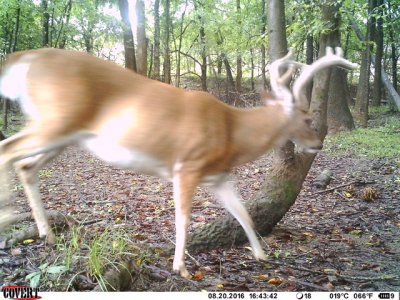Tree Spud
5 year old buck +
It takes scale...large scale ...to manage a deer herd. With scale you absolutely can impact nutrition on a deer herd. With scale you absolutely can supplementally feed deer and reap the benefits. With supplemental feeding in many instances you can increase antler size 10-15% ..which also says something about the nutritional capacity of most properties. Which also points to nutrition many times is a limiter to deer expressing their full genetic potential.
These points make the idea of culling on smaller properties { less than 10,000 acres? } even less possible. I contend most folks are managing habitat to try to influence deer behavior vs. managing a deer herd.
Would be interesting to see what you do for supplemental feeding. Spoke to a guy once who owned a managed deer property and they spent over $125,000/yr to get similar results to what you have shown. I don't think people have any idea what it takes nutrition wise to get the results you get with the deer you have posted.



